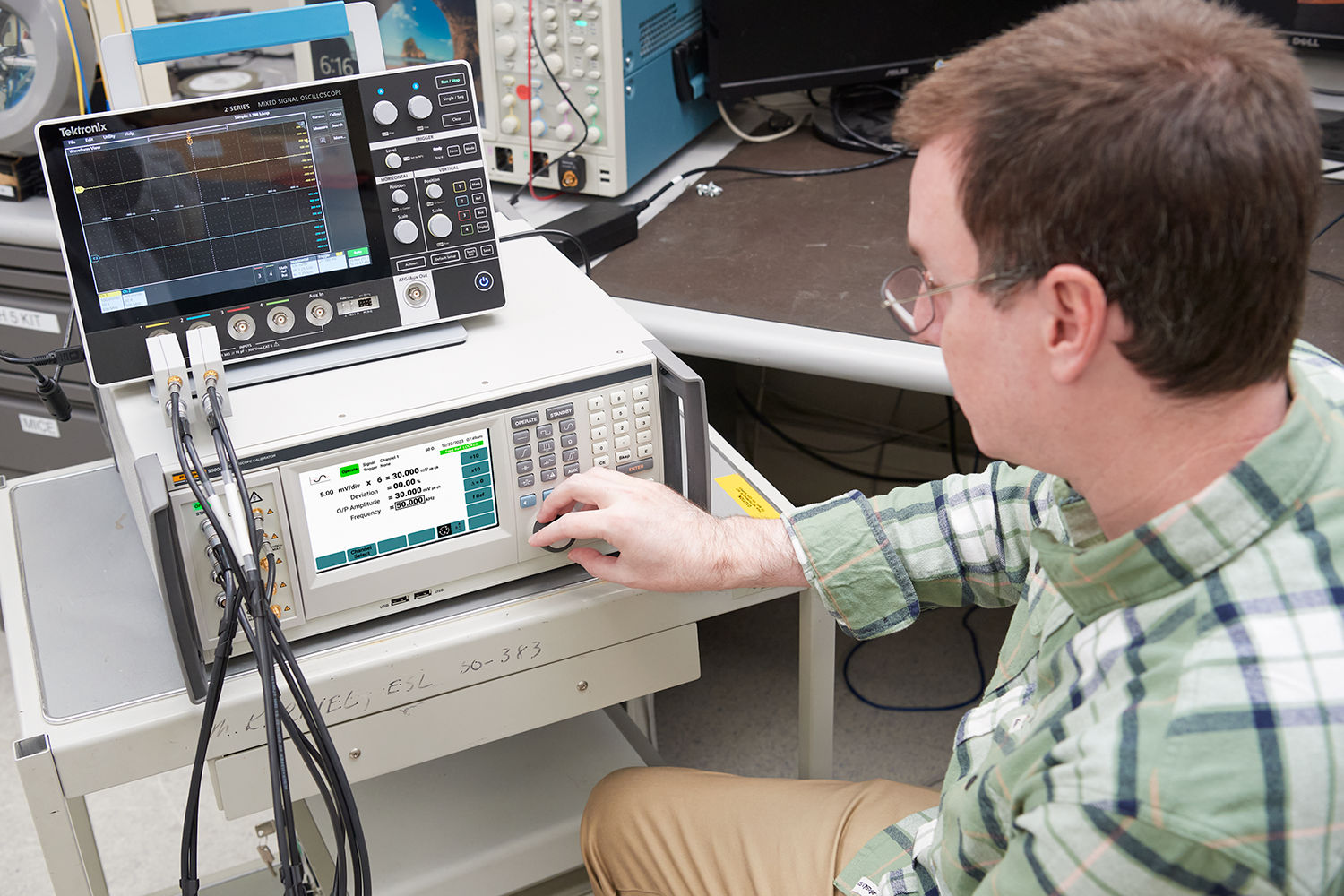- Other Fluke companies:
- Fluke
- Fluke Biomedical
- Fluke Networks
- Fluke Process Instruments
High-frequency error sources in oscilloscope calibration
Vertical channel pulse testing response plays a pivotal role in oscilloscope calibration. This process involves high-frequency signals and fast rise time pulses that carry considerable high-frequency content. The typical testing method is to employ a fast edge, and then monitor the transition time displayed from 10% to 90% of the step size.

Aberrations in pulse (pre-shoot and overshoot) are frequently measured too. Reflections that can skew pulse shape and affect results can be caused by impedance discord between the pulse source and the scope input.
Modern oscilloscope calibrators, such as the Fluke 9500C High-Performance Oscilloscope Calibrator, are engineered to reduce the effects of these high-frequency disturbances. Nevertheless, calibration technicians and metrologists should know their influence, especially in the context of laboratory accreditation and measurement uncertainty analyses.
Understanding Impedance Matching
High-frequency signal sources, including those found in oscilloscope calibrators, typically have 50 Ω outputs and are calibrated based on the level developed across a correctly terminated load. Any variation from the nominal frequency or errors in either the source output impedance or load impedance can disrupt the signal level developed across the load, which in this scenario, is the scope input.
Equation for calculating load voltage: VL = VS * RL / (RS + RL)
- VS = source of voltage
- RS = output impedance
- RL = load of impedance (VS and RS are each connected to this load)
- VL = voltage developed across the load
At high frequencies, impedances are not purely resistive and not always represented in terms of resistance, capacitance, and inductance, but through voltage standing wave ratio (VSWR) or return loss (linked to VSWR).
These parameters are vital at high frequencies and are used to indicate how the actual impedance deviates from the nominal (50 Ω) impedance. Minimizing the impact of the load (scope input) VSWR is done by designing the oscilloscope calibrator's source impedance to be very close to a perfect 50 Ω (low VSWR).
Evaluate the mismatch effect on signal level accuracy by considering the VSWR of source and load, parameters that are usually listed in the equipment specifications. This evaluation should be factored in when performing uncertainty analysis.
Uncertainty analysis considerations
The expression for mismatch error often appears in RF and Microwave theory literature, deriving a value for the error in terms of power.

Oscilloscopes, however, are calibrated in voltage terms, so the mismatch error should also be expressed in voltage terms. If the errors are minute, the power error can be halved to obtain an equivalent voltage error without significant loss in accuracy.

Typically, oscilloscope 50 Ω input VSWR can be 1.5 up to 1GHz. Oscilloscope calibrators are designed to provide low VSWR outputs, and typical values, with the Fluke 9500C and 9540C 4 GHz active head, are <1.1 up to 550 MHz, <1.2 for 550 MHz – 3 GHz and <1.35 for 3 GHz – 4 GHz.
When performing an uncertainty analysis, the effect of mismatch on amplitude accuracy should be treated as one of the type B (systematic) contributions. The uncertainty due to mismatch should be calculated from the VSWR information and divided by root two to be expressed at standard uncertainty in combination with the other uncertainty contributions.
Oscilloscope Bandwidth Testing
The influence of mismatch on signal level accuracy can be examined and factored into the bandwidth measurement. However, the method of application depends on the bandwidth test approach. The most prevalent technique is to measure the relative decrease in the displayed amplitude, expressed in dB, at the nominal bandwidth frequency compared to the amplitude at a lower reference frequency.
Alternatively, you can identify the frequency when the signal amplitude falls by 3 dB relative to a lower reference frequency can be identified. Conduct a conversion from an amplitude uncertainty to a frequency uncertainty by considering the slope of the scope frequency response.
Oscilloscope Pulse Response Testing
Mismatch effects on the fast edge signals used for pulse response testing can result in reflections. The waveform displayed on the oscilloscope will be the cumulative effect of the edge from the oscilloscope calibrator and the lower amplitude reflection from the scope input.
The design of contemporary oscilloscope calibrators, such as the Fluke 9500C, minimizes this effect by providing a low VSWR source. Any reflections typically impact the observed pulse aberrations rather than the observed rise time.
In conclusion, modern oscilloscope calibration solutions, like the Fluke 9500C, are designed to minimize the effect of impedance mismatches. However, calibration technicians and metrologists need to know their impact and account for them in their uncertainty analyses. The effect of mismatch can also influence pulse testing results by causing reflections. Excessive observed aberrations or anomalies may be indicative of scope input damage.
Continue reading
- Fully automated true bandwidth testing of high-performance oscilloscopes
- How to calibrate an oscilloscope
- How to calibrate your oscilloscope for vertical accuracy
Recommended product
- Home
- Products
- New Products
- Electrical Calibration
- RF Calibration
- Data Acquisition and Test Equipment
- Temperature Calibration
- Humidity Calibration
- Pressure Calibration
- Flow Calibration
- Process Calibration Tools
- Calibration Software
- Service and Support
- All Calibration Instruments
- Handheld Test Tools
- Purchase Info
- News
- Training and Events
- Literature and Education
- Service and Support
- About Us


